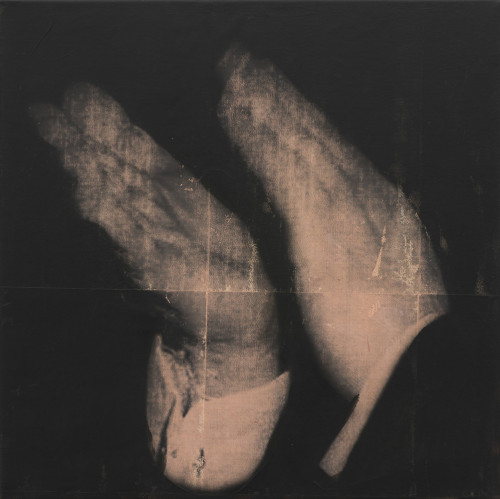
Mircea Suciu
“So who is the Devil? The main characteristic of the Devil in Faust and in
Christianity is that he is a seducer. He addresses himself to the wishes and
desires of humans, mainly their wish to get rid of undesirable qualities or undesirable
states of mind – weakness, ugliness, poverty, old age, loneliness and
depression – and acquire instead beauty, power, love, sexual prowess. The
price? Selling their souls to the Devil as Christianity would have it, or giving
up their real self with all the unwanted qualities and take on the desired qualities
in an act of delusion, as psychoanalysis would have it.”
Christina Wieland
“The ambivalent identifications of love and hate occupy the same psychic space; and paranoid projections ‘outwards’ return to haunt and split the space from which they are made.”
Homi Bhabha
Americans love to grovel in the presence of wealth. You see it, as Travis Heath noted this week, in how the owners of sports teams, all extremely wealthy men, are referred to as *Mister* fill-in-name, when not even star players or coaches are treated with that kind of respect (and it is hard to imagine a worse group of humans than the owners of major professional sports teams). Honorifics are a complex discussion, however. There is a dialectical swing from the use of aristocratic titles (Lord, Viscount, Earl, Duke, Duchess, et al) and those of religious origin such as Reverend or Pastor to the loss of a certain level of respect that comes from such titles when absent. A doctor is called a doctor because, in theory, he or she has earned that title. In Indian culture, terms like Baba, Babaji (from which it is taken) or Pandit (which is where pundit comes from) are less linked to class or caste implications, perhaps paradoxically, than, say, *Sir* is in the West. I suspect the current return of the Gilded Age to the U.S. and the extreme polarizing of wealth is finding social expression in the growth of the *inner servant* in the U.S. Leftists often sort of embarrasingly use *comrade*, and I have never quite felt comfortable with that one. Its like self parody. But, it does at least formally abolish class and hierarchy. Better, the Panthers use of the term ‘Brother’. But then that term had multiple evolutionary paths and then itself eventually gave way to a kind of cartoon version (‘Bro’).
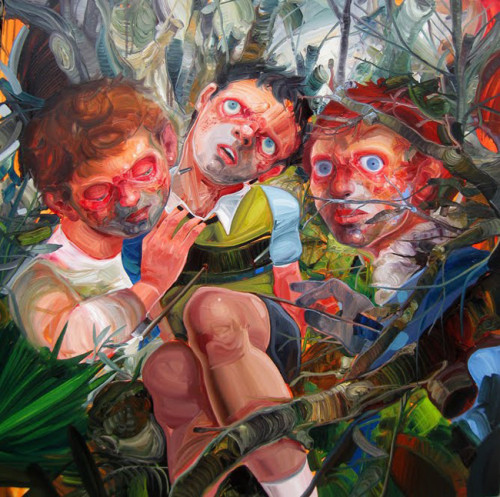
Jose Luis Carranza
This returns me to the *inner servant* and the new visualizing of fascism. The films of Italy and Germany after WW2, but especially those made in the 60s, reflected a connecting of the memory of fascism with a desire for inclusion in the ‘spectacle’. Fascism became nostalgia. What is most pertinent here is that by the late 1970s, the critical perspective on fascism had transformed, largely, to simply a fascist spectacle — in mainstream film from Europe. Or, rather, an expression of fascist aesthetics sans critical judgment. Eric Fromm at that time wrote that masochistic sacrifice as negation of self, the submission of self, was the Fascist sensibility, aesthetically speaking. The submission to power and authority. It was (and is) that odd aestheticizing of masculine submission. And in that sense there is a subtle (or not so subtle) quality associated with Catholic symbology, and its secondary and tertiary cultural manifestations (bullfighting, dandyism, etc).
“Fascist ritual can be read at one level as a complex of virility
symbols.”
Adrian Lyttelton
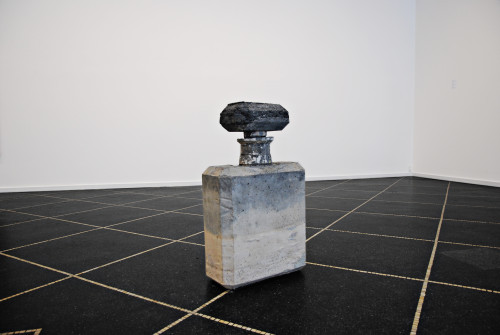
Tiril Hasselknippe
Firstly, Pasolini’s vision of Fascism as he saw it in his last film, Salo, is relevant here. A film that was released only weeks after his murder. For this is a radical critique, one that links Capitalism, the Oedipal economy, and most importantly Puritanism with the negation of life in authoritarian cultures. As Kriss Ravetto noted, fascism is a radical project of purification. Pasolini was linked with the Partito Communista Italiano, politically. And his critics were correct that he saw fascism as an expression of everything bourgeois. And of course, Pasolini was right. And that is telling, I think, because the negative criticisms of Pasolini were not wrong in how they read him, and Pasolini was never really comfortable with the prudish side of the PCI under Togliatti. The residual Fascist misogyny and fear of women had bled into Italian culture (and of course it was there in many ways before Mussolini) after the war, as well as newer migrations of certain myths. Pasolini’s homosexuality was met with disapproval from both right and left. This raises again the issues of masculinity and the symbols of power and authority that served to shape the fascist aesthetic. Lacoue-Labarthe noted that fascism was the performance of myth, or as he put it, the myth of a myth.
Ravetto notes, quite perceptively, and in a way directly related to this posting….
“…the nazi and the fascist have by now acquired generalized attributes of
evil that slip over into different discourses—alluding to questions of gender and sexuality,
religion, hygiene, decadence. Contemporary theorists and writers of all sorts
use and borrow from other, equally dubious, conventional aesthetic references, such
as the modernists’ depiction of man as a machine, Social Darwinists’ depictions of
racial and sexual inferiority, the fin-de-siecle portrayal of the femme fatale as an
emblem of decadence and decadent sexuality, Victorian notions of hygiene and feminine
mass hysteria.”
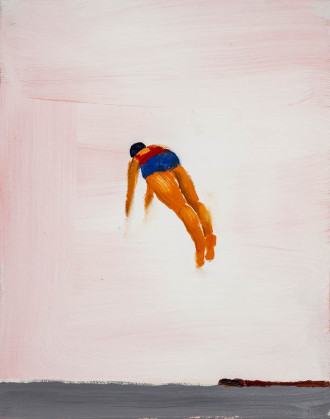
Katherine Bradford
It is not that any of these tropes are wrong, per se, except that they ARE wrong taken in isolation. She then writes…“the postwar intellectual, political, and historical culture’s vested interest in salvaging bourgeois moralism, the language of absolute righteousness, and capitalist institutions from the stain of fascism.” And this is not quite right. This was perhaps more right twenty years ago, maybe, but today the intellectual and political classes are more rehabilitating fascism than trying to avoid the association. In fact, I am not sure the proprietor class of the West ever saw fascism as a stain. Today the aesthetic in play is…’fascism is very stylish, and kinda sexy, too’. And because Capitalism is so intertwined with fascism, it has served as a better marketing model to just embrace your inner brown shirt. It is important to note the rebranding going on. For as soon as media voices, regardless of their self definition, politically, take sides with the Imperialist West they are complicit with that Imperialism, and with Capital and with, at the end of that road, fascism. You cannot be marketing your critique of fascism in order to make a profit. This is so obvious its hard to know what to say. We all have to eat, but if you must prostitute yourself, then you can’t pretend you are not. That’s all. Nobody wants anyone not to eat.
Fascism always gravitated toward certain representations of masculinity, and in that sense alone is linked to the exhibitionistic. One thing Pasolini grasped was the sexual ambivalence in the fascist’s sexual fetishizing. And the sado/masochistic side of this mythology, this performance, is always doubled. And really, I might argue it is more than doubled. It is double doubled. The rehabilitating of fascism may in fact, on at least some levels, contribute to the difficulty the white educated classes have in really actively denouncing University rape culture. Thereare so many layers of conflicted sentiments in all this; and again, per Ravetto — contemporary depictions of Nazism, for example, are borrowing images and symbols the Nazi’s themselves would have condemned.

Janina Green, photography.
The problem Ravetto runs into is that at some point, difference and sexual otherness cannot be separated from, or as somehow outside the unfolding historical narrative of fascism. Not to belabor this…but let me quote Ravetto again; “Instead, Salo, The Night Porter, and Seven Beauties, expose various fascistic economies that extend beyond historical fascism— reaching into the discourses of victimization, gender difference, capitalism, and bourgeois moralism.” Well, maybe I just don’t follow the argument here. What is a discourse of victimization? Does it exist outside history? Gender difference is, in this context, the perception and morality of gender, and the exploitation of women and stigmatizing of homosexuals, transsexuals, and then bourgeois morality is all a product of history. As is, finally everything. But it is a curious argument from a critic who is then using Pasolini as an example. Then Ravetto writes…“fascism is presented not as a political ideology nor a totalitarian organization but as an agency of desire—a “desiring machine,” a “war machine” that infects every level of social desire with the desire for repression and abolition.” So…let me get this right, fascism is a ‘desiring machine’. Not ideology and not a societal organization of domination. No, its a sort of free floating *desire* for these things. I suspect what is meant is desire is linked to a lack, but what happens in this sort of analysis is that fascists just walk away without responsibility.
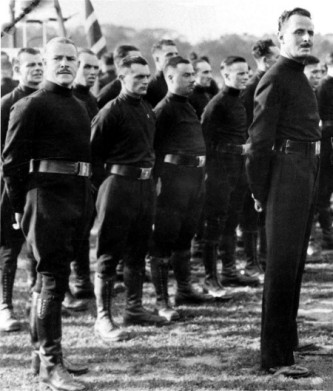
Oswald Mosely and his British Union of Fascists.
Also, in an effort to avoid a certain regressive normative and/or binary set of equations for sexuality, much contemporary theory seems uncomfortable with the shadow elements of, for example here, homosexuality and the near camp aesthetics of National Socialism. The fascist, especially the Nazi fascist, was acutely contradictory, and the masculine submission, the metaphysics of Nazi myth, there is a certain domination of others, but also of self, and of the instincts of the self. If fascism is, at least partly, the performance of myth (and to what degree is all hyper masculinity a performance?) then the symbols of submission, erotically, are going to be exaggerated and over-charged. The transgressive aspect, for that time, of homosexuality — its illegality in fact — allowed for the performance of multiple mythic registers that all linked up with a pathological Father. And the Capitalists classes remember, were for as long as they could tolerate it, hugely attracted to Hitler. I mean the Nazi sense of design was highly theatrical, all those black boots and iron crosses, the brown shirts and goose stepping. One could, I suspect, do an entire deconstruction of goose stepping and the anal sadistic personality.
But let me return to the re-purposing of this project of purification. Klaus Theweleit’s book, Male Fantasies, on the German freikorps after WW1, remains a significantly cogent study of fascist mythology on an individual psychoanalytic level. For it is to be noted that the freikorps’ military and political mission was to secure the borders of the homeland from outside infestation.
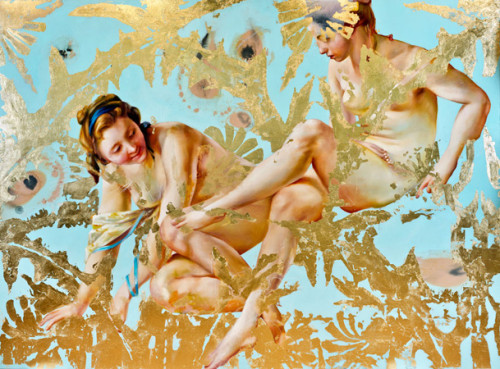
Angela Fraleigh
Kevin S. Amidon and Dan Krier write:
“The Freikorps movement with which they associated themselves terrorized the cities and border regions of Germany in the years immediately after the First World War in attempts to secure both the interior and the borders of the state against the possibility of lasting communist revolution. Theweleit argues that these men emerged incompletely individuated from the militarized acculturating institutions of late nineteenth-century imperial Germany. They therefore approached what they perceived to be threats to the integrity of both their nation and their bodies with a kind of thoroughly disciplined annihilating violence— violence that sought to efface any recognizable trace of the imagined or real adversary and that bore a systematic symbolic ordering revealed in their many forms of fantasy production.”
What is so telling in Theweleit’s book is the sense of historical forces that came together against a backdrop of social and societal trauma. Cultural expression was interconnected with institutional practices and tradition in Germany. But there has been a strange dislocating of historical awareness today. And much critical writing has tended toward this reinforcing of amnesia, in a sense, by theorizing in these vacuums. Theweleit’s distrust of much Freudian terminology is very different than, say, Revetto’s rejection of Freud. For the latter is not replacing the real historical analysis with another historical analysis, but rather just forgetting that history is even there. I find myself feeling, when I read a lot of this stuff, a kind of mental numbness. And this brings me back to the current post modern climate for fascism. On the one hand Donald Trump is a cartoon demagogue, but he is also a TV star and a celebrity. That he speaks at a 4th grade level is not surprising because even Obama only speaks at an 8th grade level. There was a critical posture in Pasolini, and in Fassbinder, who came out of the other fascist country in Europe, and in both they made films that expressed something about the production of the fascist personality.
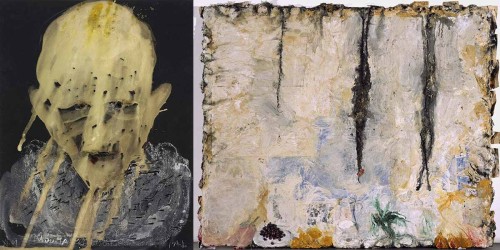
Miquel Barcelo
“The rebirth and regeneration of the nation was essentially
the rebirth and regeneration of masculinity – a masculinity that was seen as having
been weakened and in a state of degeneracy by democracy, pacifism and the
Jews. The Jews as emasculated and feminised men was a prominent theme of
nineteenth- and early twentieth-century Europe. In this
sense the theme of contamination, so prominent in fascism, applies equally to the
Jews and to ‘devouring’ women.”
Christina Wieland
Donald Trump is expressing in his 4th grade way the deep panic of white men in the U.S. today. More interesting is the figure of Hillary Clinton, a clearly psychopathic sadist whose delusions of grandeur are linked directly to the performance of those myths that were foundational for National Socialism (as is Trump, but at a lower grade level). This is the week of both the NFL playoffs and of a Democratic debate (starring Hillary), and the announcements of the Oscar nominations. These are the ceremonies of white America. Not a single actor of color was nominated, again, this year. Now, that is almost beside the point really, because what is more significant is to examine the films that WERE nominated (more below). The masculinity that is felt weakened and under siege finds expression in the gladiatorial spectacle of American football. A game now proven to cause catastrophic and long lasting brain trauma. In fact, there was even a film out this year on this very topic; Concussion, with Will Smith. The film has been hugely successful. A contradiction? Sure, but then this speaks to the ways in which mass media entertainments are read, and how a form so familiar and with actors identifiable in their celebrity, supercede the message — or rather, the message is not the message.
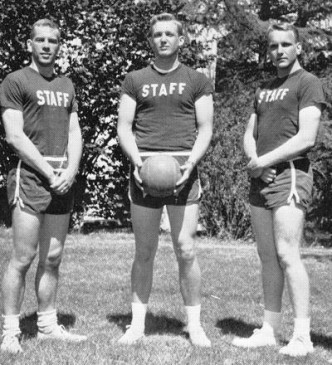
Donald Trump, at military school.
I wrote last time about an almost cultish belief in progress that exists today. But the shadow trailing behind this idea of progress is a fear of decline. Hollywood film today is in the business of neutralizing the idea of decline. It reinforces or re-establishes the white European history and point of view, the point of view of colonial power, as the vantage point of all narrative. But amid these refurbished myths are the new ornamentation of today’s ‘Tolerant Fascism’. Same sex marriage, no problem. Multicultural diversity, absolutely. Homage is paid, in nakedly self congratulatory ways, to the progressive and tolerant nature of American Exceptionalism. These ceremonies express white panic, but they also express the need for masculine submission. Trump and Hillary are very wealthy. The NFL makes billions of dollars and the film industry the same. The identification is with the ruling class who produce a version of history and of reality in which white elitism is asking for your immersion in their project of cleansing and rites of purification. The threat at the border is displaced Arabs, and the threat from within is the obviously violent underclass, especially the black underclass. That so many players in the NFL are black is likely not a coincidence. Fungible. Throwaway humans. The military is gushed over, labeled heroes and patriots, but used up and discarded. The suicide statistics for military personnel is stunningly high. Not to mention PTSD. The brain damaged NFL player and shell shocked soldier usually come from the same fungible class. The Ivy league does not produce soldiers, nor cornerbacks. A mini parable on several of these issues is the tragic saga of Laurence Phillips, here in Dave Zirin’s nice summation http://www.thenation.com/article/who-killed-lawrence-phillips/
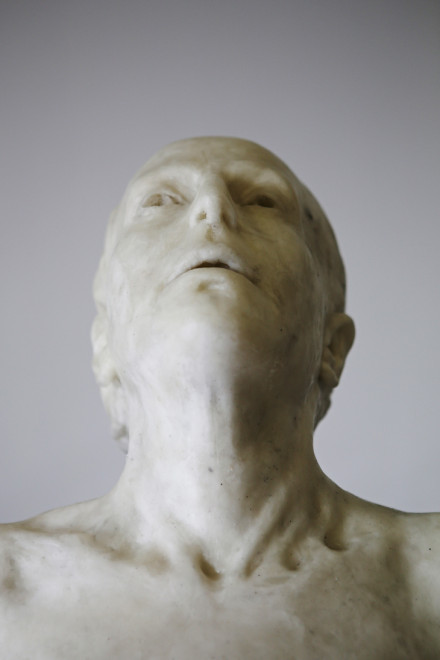
Virgile Ittah
One of things glaringly absent from psychoanalysts like Christopher Bollas, when discussing *the fascist personality*, is the historical conditions that produce class. To say anyone could become a fascist or that we are all potential fascists is not a valid statement. It posits some universal situation of similarity, but more, it’s just mystifying the entire topic. It denies class, and really it denies the very things Reich, and later Adorno and Horkheimer saw in the fascist personality. It replaces history, or our dialectical relationship with it, with a universal human state of semi neutrality..
The identification with and submission to a greater power, a Father figure, a belief in great transcendent goals — this quasi messianiac compensation for the daily indignities and feelings of powerlessness, coupled to the hierarchical system of Capital, and an ever more alienated atomized existence is what produce a hyper rigid and inflexible masculine character. A character type that is detached from his emotional life. The contemporary tolerant fascist is, I think, able with great agility, to adjust to internal contradictions (for a while). The white american man is almost in a state of constant negotiation with himself about reconciliation with his own contradictory beliefs. This is a part of that production of self that focuses on ‘reasonableness’, ‘responsibility’, and ‘maturity’. But these ideas have very special and narrow definitions. The system today manufactures agreement. It is the production of consensus that is, in a way, the hallmark of advertising. The hatred this new tolerant fascist feels for his own failures is made into a belief that his life will change. He, too, could be Donald Trump. He too can be wealthy. And he too can purchase the women he so fears and hates. This is also bound up with the performance of the masculine. I often think huge numbers of men who watch American football don’t much like it. Not really. But the masculine ideal loves football, and to love it and watch it is to be part of the group and of the mythology of conquest.
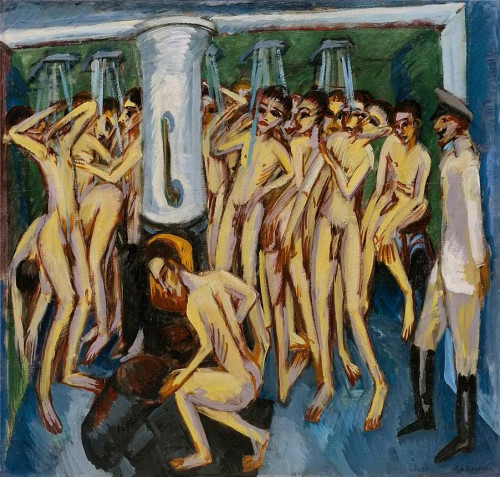
Ernst Ludwig Kirchner. 1915 ((Das Soldatenbad).
The question of race, of course, cannot be emphasized enough. The class segregation of the U.S. is more acute now than even twenty years ago. And the liberal University educated class, those not likely to join the military or play professional sports, or to become cops, are the most psychically put upon demographic in the country.
“There is a certain gesture of virility, be it one’s own or someone else’s, that calls for suspicion.”
Adorno
For irrespective of their employment opportunities, these are often men whose socially insecure fathers (and mothers, which is an intriguing question) have left them an inheritance of both class and racial anxiety, but more, a terror of and simultaneously, a desire for submission. The implications sexually, for submission, resonate with homosexual fears. And this is a hugely complex topic.
From Barry Paris’ bio of Louise Brooks…describing Berlin 1928:
“Sex was the business of the town. At the Eden Hotel, where I lived, the café bar was lined with the higher-priced trollops. The economy girls walked the street outside. On the corner stood the girls in boots, advertising flagellation….The nightclub Eldorado displayed an enticing line of homosexuals dressed as women. At the Maly, there was a choice of feminine or collar-and-tie lesbians. Collective lust roared unashamed at the theater. In the revue Chocolate Kiddies, when Josephine Baker appeared naked except for a girdle of bananas, it was precisely as Lulu’s stage entrance was described by Wedekind: “They rage there as in a menagerie when the meat appears in the cage.”

Kurt Kauper
The emasculation of German men, after WW1, can arguably be linked to seething violence against otherness that surfaced as National Socialism. Craig Lambert writes (quoting Maria Tatar who has written a book on Weimar):
“.. Tatar argues for the continuities between Weimar culture and the Nazi era that followed. Diverging from other humanities scholars, she connects the secret pathologies of the Weimar era to the fascistic rage that became public policy under Hitler. In this regard, she paraphrases the German sociologist T.W. Adorno, to the effect that the private vices of one era become the public virtues of the next.
In Weimar, those private vices included a demonization of “anyone seen as feminine or feminized,” Tatar asserts. This meant not only women in general, but also homosexuals, Jews, and prostitutes. “Once you have pathologized anything that represents ‘otherness,’ any group can be put into that slot,” she argues. Using diaries, newspapers, novels (Döblin’s Berlin Alexanderplatz), film (Fritz Lang’s M), paintings, drawings, and other cultural artifacts, Tatar explores the “huge anxiety and hysteria” that accompanied several highly publicized cases of serial murder–or of sexual murder, Lustmord–in Weimar Germany. The “sexual” homicides often took that label mainly from their systematic choice of victims, such as women or homosexuals. Like Jack the Ripper, who preyed on London prostitutes, the German killers often seemed to be enacting a vendetta against “those who were seen as different.”
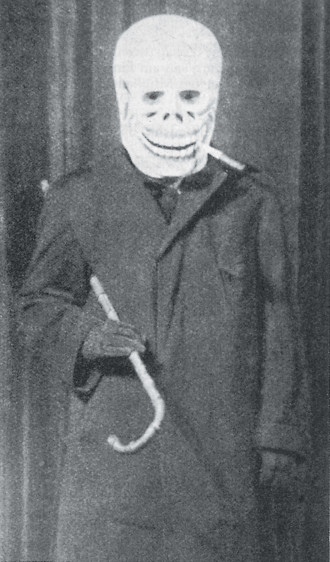
George Grosz
There are, however, a lot of problems with Tatar’s book, and they begin with her rather parochial notions about art. But the issue of misogyny here is read in a too one dimensional way (to be generous). Artists like Dix and Grosz, and even Fritz Lang in M are chastised in ways that confuse the specific with the general, and also Tatar seems rather oddly unable to grasp the concept of metaphor. I should add that Tatar’s outsize influence is a bit disconcerting because this is more ahistorical and finally rather shoddy scholarship and thinking. However, the point here is that the trauma of Germany after the first world war led to fixations on bodily mutiliation, violence against all that was seen as weak, and also led to the acute appeal of those things, erotically. And the private ambivalence of Germany’s men, following the humiliating defeat of the war, became public and collective rage. The rage felt against weakness, the eradication of the feminine within was part of this fascist mythology of physical empowerment and Aryan purity. Weakness had come from both within and without. If maschismo is the incorporation of the feminine, or the female, into oneself, so as not to need women — the pathology of the Fascist is not for incorporation but eradication. This is the project of purification, again, and the nation is the metaphor of a body racked with disease and infirm, unhealthy, and weak. The Fascist must cleanse the body. Must lance the abscess. The nation must be purified. Now, the fact that one cannot, on a personal level, really kill the feminine within only means there is a highly ambivalent set of psychological mechanisms in play. The abject, however, must above all else, and firstly, be eliminated. Purged. Cleansed. That is the political goal and the personal. This cross pollinating of Nation space with personal space, both of which are imaginary in one sense, and both most acutely real on another, is what gives way to repressed conflicts and tensions. But like the Devil, the seducer, that which must be eliminated can also be seen or experienced as alive within oneself. The domination of oneself — the triumph over personal weakness, or illness or infirmity, is the basis for the performance of this myth. The desire for that which must be purged is part of what must be performed, as a part of this ceremony of cleansing. One never desires anything as much as what is most transgressive, what is most forbidden. Homosexual desire, repressed as a sin, becomes a player, a character in a drama of reinscription, in a sense. Sado Masochism, or transvestism, are the kitsch associations with Nazi erotics. But fascism in general, is by definition, a violence that targets that which is most erotically and spiritually alive.
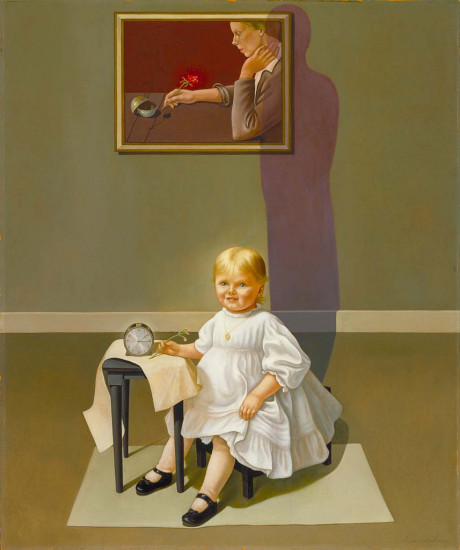
Helen Lundeberg
Today’s American Exceptionalist and Tolerant fascist is functioning from a greatly different set of historical precedents. The first is Puritanism. For the American male ideal has always been sexually immature and repressed. He would rather be with his horse or gun than his girl. That emotional witholding and stoic character is one for whom weakness is less an infection in the Nation/body than a failure of discipline and willpower. The American fascist is one for whom there is no greater good than business. And business acumen. Alone with his horse and his gun, gazing out over the great praries or rocky mountains, this Marlboro Man has always been crafty, and cunning — not a rube, but wised up, though only to a point. And without much sexual expertise. He is wholesome and virtuous, and a man of few words. For words are a teeny bit feminine. But over the course of the last forty years, this image, though always violent (Indian killer, rancher and beef eater, friend of manifest destiny) has taken on a far more jingoistic quality. And today, the evil Bolshevik is reincarnated as Putin, and the Jewish infestation is now Arab. In fact its remarkable how closely imagery of Arabs today resembles the imagery of Jews in the 1930s. Dirty, conniving, hook nosed, swarthy. Where the Jew was reviled as a banker and hoarder of gold, a merchant, Fagin, the contemporary Arab is closer to old stereotypes of Asians. Calculating, unfeeling (life is cheap in Asia etc) and ruthless. Arab Fu Manchu.
But intersecting this sense of American exceptionalist as cowboy/rancher/ homesteader is the new urban Dirty Harry version. In fact a case could be made that Eastwood has come to incorporate both threads of masculine ideal. The fact that Eastwood’s offscreen narrative, true or not (cough) is that of abusive to women, reactionary politically, and vaguely racist. A side bar essay is begging to be written on Eastwood directed movies and animal eroticism. I digress. America today is almost the anti-Berlin 1928. It is sex negative, repressed, and driven far more by fear of interior infection than outward threat. But not exactly *infection*, but more a kind of pre-screened lack of wellness. The American sees lack of attention to self interest, not infection. Oh sure, those Arab terrorists might be a worry, but the country is falling apart. Black unrest, Latino unrest, illegal immigrants, and no jobs. The jobs were stolen, sent away, something. The white man in America today in general wants to cauterize the internal bleeding before nuking Arabs.

Bryan Whitney, X-Ray photography.
The White liberal fascist, in opposition to the NASCAR cracker fascist, is one struggling acutely with his masculine notion of strength (the NASCAR version is more driven by anxiety over and fear of the feminine, I think). The liberal wants to be ..well…liberal. Pro choice, pro legalized weed, pro marriage equality. But he cannot find the toughness or sexiness in any of that. But business, yes, that CAN be sexy. The new show Billions, starring Damien Lewis, is sort of gentile Mamet I guess. But it is white male strength that is being sold. And wealth, the appeal of wealth. It is interesting to note the Oscar nominations this year have never felt less relevant. I mean they have always been a triumph of studio marketing over any substance but now its almost as if nobody really cares. They will watch, because they want to see celebrities. But there is not a single film that has genuine cultural traction. The Revenant is more Manifest Destinty by the director of Birdman, while Spotlight is a kind of old fashioned movie about the journalism that exposed the Boston catholic church paedophile scandal. And The Big Short, a sort of sit com narrative of the financial collapse. There is nothing here of substance, really. No art. But more revealing of the current white male psyche is to watch the new season of TV. For television now exerts both more cultural influence than feature film but it also seems a more relevant medium somehow. The series format is more open to expanded narrative and that allows, even if unintentionally, a wider scope for the inscribing of something, anything, that is lurking out there in the Zeitgeist. A show like Ray Donovan is worth comparing to Spotlight. Because its the same story. And as much as I find Ray Donovan both irritating and somewhat reactionary, it is more interesting by virtue of its expanded scope. Now Ray Donovan is also a very telling exercise in the performance of American fascist mythology. It might also be compared with Black Mass, the feature film based on Whitey Bulger, and starring Johnny Depp. Well, again Ray Donovan is probably a better version of that story if only because James Woods makes a better Whitey.
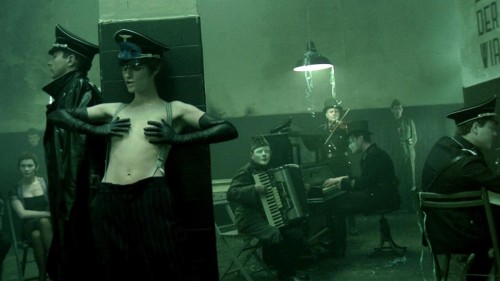
The Night Porter (1974). Liliana Cavani, dr.
This question of expanded narrative is hugely important, I think. And there are two aspects to his. One is that, as Adorno intuited, really, culture was no longer adequate to humanity (as Hullot-Kentor put it). And the second is that narrative itself is now operative in a way that is post genre, in a sense.
“As in many other aspects of contemporary motion pictures, it is not standardization as such that is objectionable here. Pictures
that frankly follow an established pattern such as ‘westerns’ or gangster and horror pictures, often are in a certain way superior to pretentious grade-A films. What is objectionable is the standardized character of pictures that claim to be unique; or, conversely, the individual disguise of the standardized pattern.”
Adorno, and Hanns Eisler
Everything is now genre. The individual, the American Exceptionalist, is born into families that themselves are socially weakened, or fragmented. The child grows up in acute anxiety, in an age of surveillance and marketing, where, again per Adorno, the world becomes a substitute for images. The tolerant fascist grows up in a screen age where daily life is a channeled teleplay from Hollywood or ad copy from Madison Avenue. The doubling of anxiety for white children is in having to make sense of the dislocations of meaning between what they see and hear, and what they see and hear in media. But this leads back into discussions of masculinity. And, significantly, into the qualities that define what I am calling the ‘tolerant fascist’.
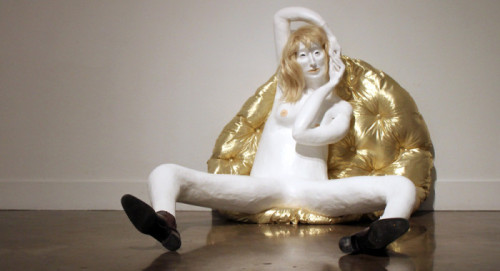
Elizabeth Jaeger
Leo Bersani, in the AIDS issue of October wrote that the gay macho style now works to idealize the very representational standard that oppresses the homosexual man. And this results in not more than just an erotic investment in traditional masculinity, but an identification with it (Kaja Silverman). Now Silverman goes on to note Lacan’s observation that *virile displays* always seem feminine. One enters into here the performance of myth again. And to note, again, that all masculinity, but perhaps most acutely the exaggerated macho masculine is always a masquerade. That this so neatly fits into the conventional notions of Fascist exaggeration of mythic performance should be noted. It also introduces questions of in what ways the feminine is hostile to the queer macho role, and more, how *whiteness*, as a signifier, is performed.
“…the socially conditioned weakness of the father . . . prevents the
child’s real identification with him. . . . The growing child looks for a stronger,
more powerful father . . . as it is furnished by fascist imagery.”
Adorno
The expanded narrative opens up avenues of meaning that are worth considering. The fact that most new shows feature gay couples, always in a positive light, regardless of the rest of the ideological imprint of the show, is part of the presentation of the tolerant fascist. Even cop shows now have gay characters portrayed in a positive light. So, in effect one has the normalizing of Imperialist militarism, or police state apologetics with positive depictions of gay characters. That none of this resembles daily life is not seen as questioning the ‘tolerance’ of the central point of the view; which is uniform in its whiteness. Or in its Orientalism. The lastest franchise (Tyrant) from Israeli Gideon Raff, is set in a fictional middle eastern country (sort of a cross between Iraq, Syria, and Qatar) with a sadistic psychopathic ruler who’s brother has been living in the U.S. The Westernized (superior) brother comes to visit with his family. The son of the good (American, westernized) brother is gay. Complications ensue and the brother leads a revolt to overthrow the dictator (bad Arab brother) and install democracy (with, openly, U.S. assistance). Like all of Raff’s shows it is deeply anti-Arab, and pro U.S. and pro Israel. The son, wealthy, white, American, falls for an Arab youth, a relative of the ruling family. The Arab love object is later executed by the Tyrant (to pay symbolically for the sin of promiscuity, and probably a few other things), along with a number of other homosexuals. All stereotypes are reinforced.
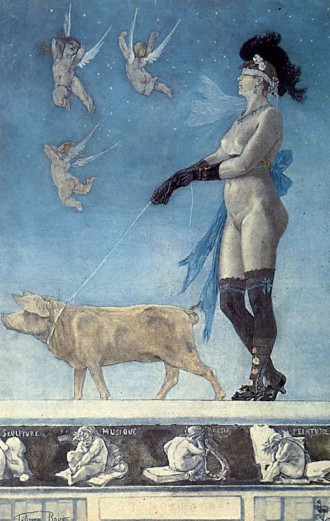
Felicien Rops
There you have it. Masculinity in this show is depicted by martial courage, belief in the American way of life, and in a distinctly Western (American) point of view. The Westernized brother is restrained, educated (a doctor) and is married to a beautiful blond professional. The bad non Western brother is a sociopath without impulse control, a hedonist, and serial liar, and a believer in monarchy. The good brother is soft spoken, the bad brother is loud. And on it goes. It is stunning how overtly pro-Imperialist are ALL TV shows from Hollywood. But the idealized male protagonist of today has, in one incarnation, returned to the square jawed and clean cut steely eyed hero of the 1950s. Retro ideal masculine, and in that sense a lurking sense of Camp is creeping into all this, albeit by stealth. And here is why the gay male gaze, incorporated into the gaze of the status quo (on screen mind you, not in reality…) alters the sense of male idealization. Now these new slightly camp male heroes are not incorporating the feminine (as say Brando did, or James Dean) but eliminating it in a way that suggests macho gay erotic aesthetics. And it is a hugely crypto ironic presentation. The new clean cut square is not in the least androgynous. But neither is it the Stallone or Arnold action figure steroid hero. The new male (and let me list a few examples, Channing Tatum, Chris Pine, Paul Walker, Ryan Reynolds, Ryan Gosling, Chris Hemsworth, Bradley Cooper, Peter Facinelli, Michael Weatherly, Ryan Phillippe, Eric Dane, Diego Klattennhoff, Josh Hartnett, Aaron Eckhart,…ok, I’ll stop there) is humorless (the joke is elsewhere) and focused, and to a large degree they portray characters of dedication, often, if not usually, to law enforcement or the military. And this is no particular criticism of any of these guys, some of whom are very good actors. Now obviously there are tons of actors working in film and TV who are non-white and not square jawed, etc. But I would argue this group, and there are a dozen others, represents a certain nostalgia for a heroic male ideal that is lacking all softness, all moistness, all femininity. If Stallone and that era of cartoon body was too misshapen and too somehow obviously first or second generation children of immigrants, this new group of very white male actors is linked to both camp aesthetics (they are periolusly close to parody in some cases) and by extension in a sense, to something that is normalizing a self aware performance of masculine myth. It is a masquerade of masculinity, and necessarily a white one. It is also, and probably consciously, a return to the cold war image of masculine anti communism. The white male masculine always carries an acute sense of self control, a lack of hedonistic excess, and a kind of coldness. The echoes are button downed WASP Yankee thrift and pragmatism. And of duty. Which places it closer, actually, in terms of temperature, to Tom Wolfe and William F. Buckely (note apropos, Speilberg’s Bridge of Spies, a revisionist fairy tale of cold war intrigue, is nominated for Best Picture, and second note, in a way rather sadly, the brilliant Mark Rylance is in it, and nominated for supporting actor.)
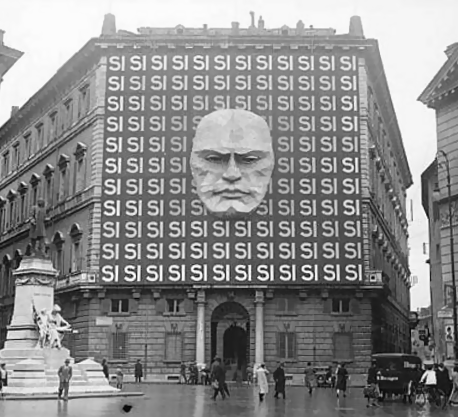
Palazzo Braschi, Poster for Fascist party. 1934.
The tolerant fascism of today has replaced the excess rage of humiliation, circa 1928 Germany, with an anti-depressant eating, and affectless blank callousness. This is the fascist who has eliminated the very last vestiges of Dionysian energy, and replaced it with a hyper rational obedience to power, a slightly campy retro blankness, in which the transgressive is projected outward, in which cleanliness matters, giving up smoking is important, while you sanction Disposition Matrix and TPP. But who in the end will submit, prostrate in symbol, because it is better, anything is better, than giving up their racial privileges. White men dream a return to greatness, even if suffering under a generalized autism, as Debord put it, and with a 4th grade vocabulary. It occurs to me that Trump is much closer to Mosely than Mussolini. Trump is a dilettante, and wealthy. Ted Cruz is closer to Il Duce, and even then, its a sort of less operatic version. The chief caretaker of the Fascist legacy is Hillary Clinton. That slightly pop eyed hysteria, the sense that the sight of blood, or thought of it, increases salivation. She is the new tolerant fascist, though. She appeals to liberals, not the working class whites or minorities. I don’t think she even appeals to proletarian women much. No, she appeals to college educated younger women, entitled, and selfish, and angry. And to a degree she appeals to some liberal white men who imagine this political theatre is something else, something like real life. But Hillary is the serious fascist in this And her cackling response to Gaddafi’s death, the now infamous ‘we came, we saw, he died’, resonates as the closest thing to Shakespearean villainy since Nixon. Except by way of Mickey Spillane. And Jimmy Hoffa. The cultural and aesthetic signature of this age is Clintonian. The deep state goes on, regardless. But the style of this new fascism is Bill and Hillary. And then Chelsea married a banker, a hedge fund broker with ties to Israel. Bill scans the horizon for opportunities to plunder. To pillage. But there is no artistic reality in Western culture to match this. Nothing sordid enough, venal enough. This is the Clinton age, and there is no writer yet (or filmmaker) to chronicle it, to give it expressionistic space. Pinter is dead. He might have. No American certainly. And that is a huge problem.

Hi,
The painting you labelled as mine is not by me. I’ve never seen it before, and don’t know who it’s by. I suppose there could be another artist named Kurt Kauper, but since my last name is extremely rare it doesn’t seem likely.
Thanks.
Kurt Kauper
very sorry Kurt …I will change it. I saw it labeled that way and will try to dig up where I found it so I can let you know.